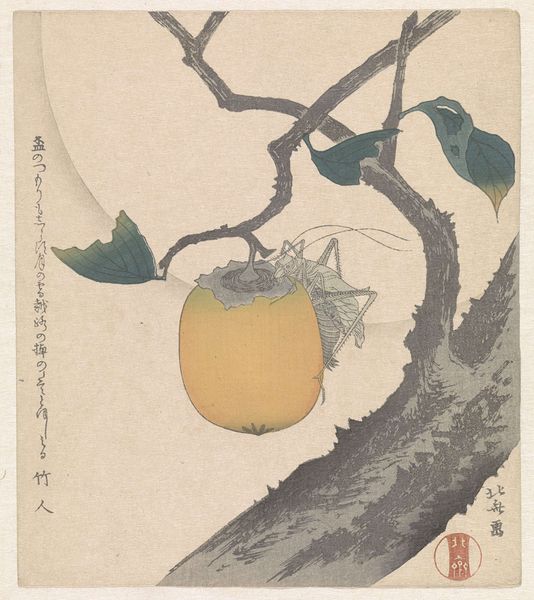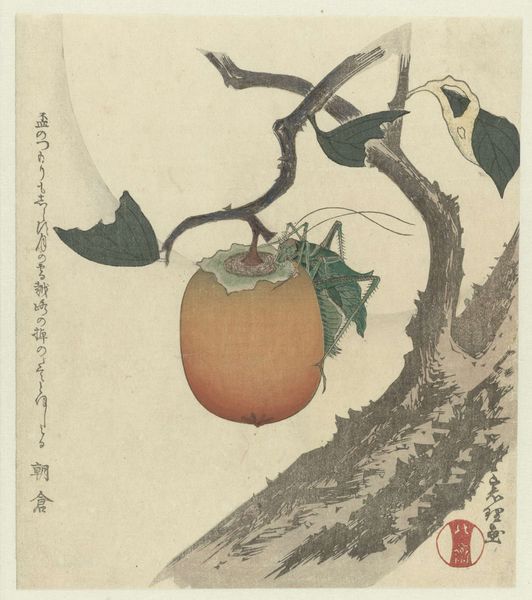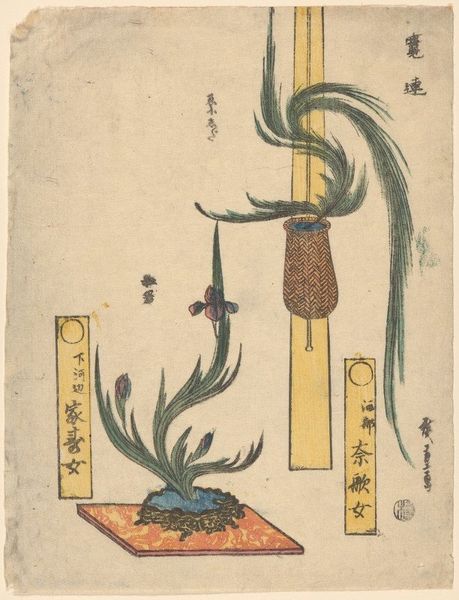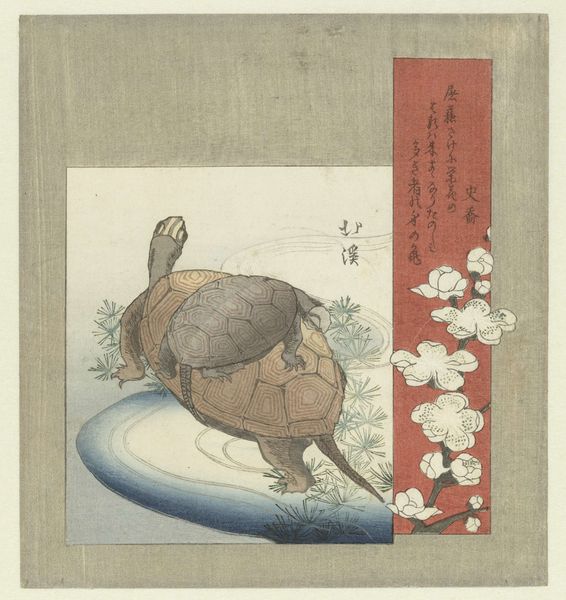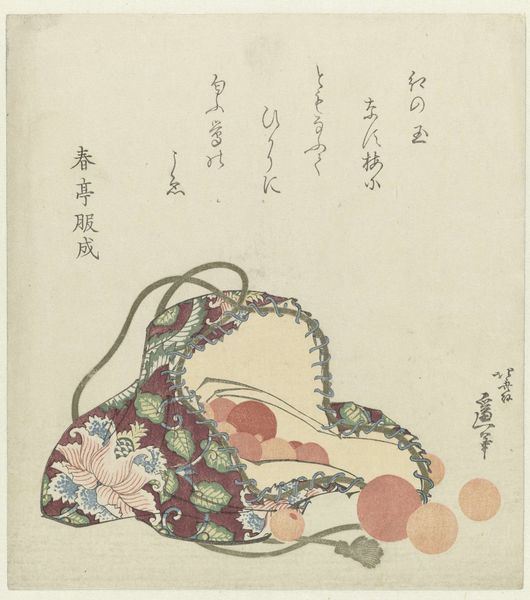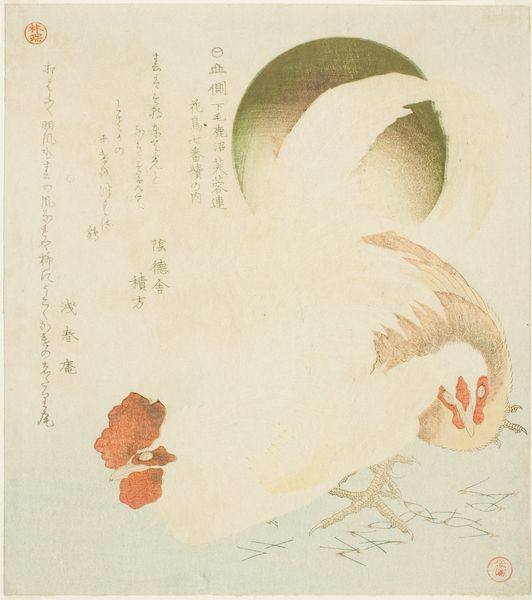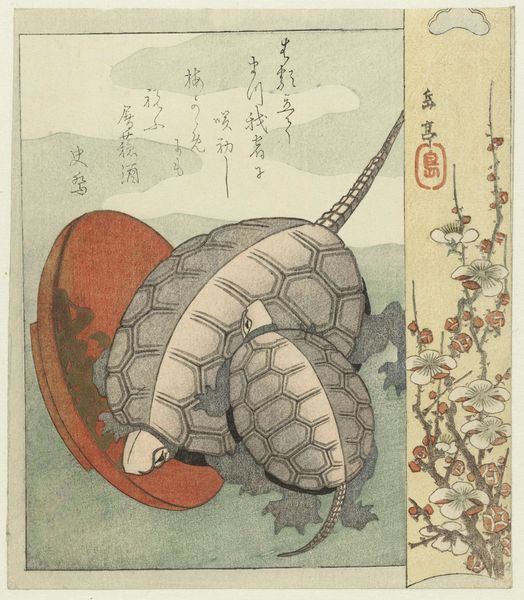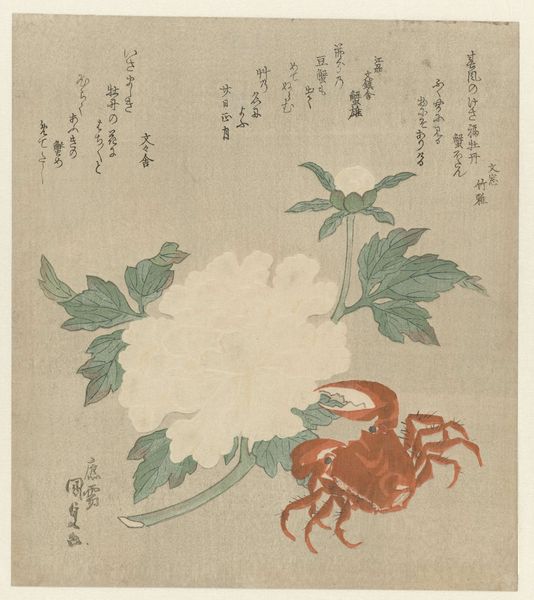
print, paper, ink, woodblock-print
#
blue ink drawing
# print
#
asian-art
#
ukiyo-e
#
paper
#
ink
#
woodblock-print
#
watercolour illustration
#
watercolor
Dimensions: height 210 mm, width 181 mm
Copyright: Rijks Museum: Open Domain
Curator: Welcome. Today we are looking at "Zoetwatermossel en Japanse zon-en-maan mantelschelp," or "Freshwater Mussel and Japanese Sun-and-Moon Scallop" by Totoya Hokkei. The work dates to around 1821. Hokkei created it as a woodblock print in ink and color on paper. It's quite an intimate piece. Editor: Intimate is right. There's something both elegant and wistful about this composition. The muted tones and the delicate rendering of the shells create a sense of quiet contemplation. I am seeing life, death, the ocean. Curator: Seashells had complex symbolic meanings in Edo period Japanese culture. Scallops, like the ones seen here, were not only beautiful natural objects, but were associated with specific virtues in popular literature and poems. Consider how this image participated in creating shared social values. Editor: Absolutely. The pairing of the reddish shell and the paler one also jumps out to me. Is it intended as a reference to the sun and moon? Perhaps representing duality, balance, and the cyclical nature of time? Curator: Indeed. It aligns with the "sun-and-moon" element present in the title. There were literary societies dedicated to matching seashells to passages in Japanese and Chinese classical texts. Hokkei's composition directly references these pursuits and demonstrates the influence these had on social culture. Editor: I wonder, too, about the choice to include the mussel. Its dark, almost brooding presence anchors the composition, giving contrast and maybe a sense of mortality amid all that ethereal beauty. Is there some significance attached to this mussel contrasting the others? Curator: It certainly is a visual and symbolic anchor. One could imagine the mussel serving as a counterpoint—grounded, earthly existence against the more celestial symbolism associated with the sun and moon and scallops. Also, keep in mind the rise of natural history studies in this period and how these objects become collectables within such institutions. Editor: I see now. This unassuming composition reflects a world steeped in symbolism, scholarship, and subtle societal aspirations. It really shows the cultural climate of the Edo period. Curator: Indeed, and analyzing art through such cultural trends helps give depth to Hokkei's delicate depiction.
Comments
No comments
Be the first to comment and join the conversation on the ultimate creative platform.
